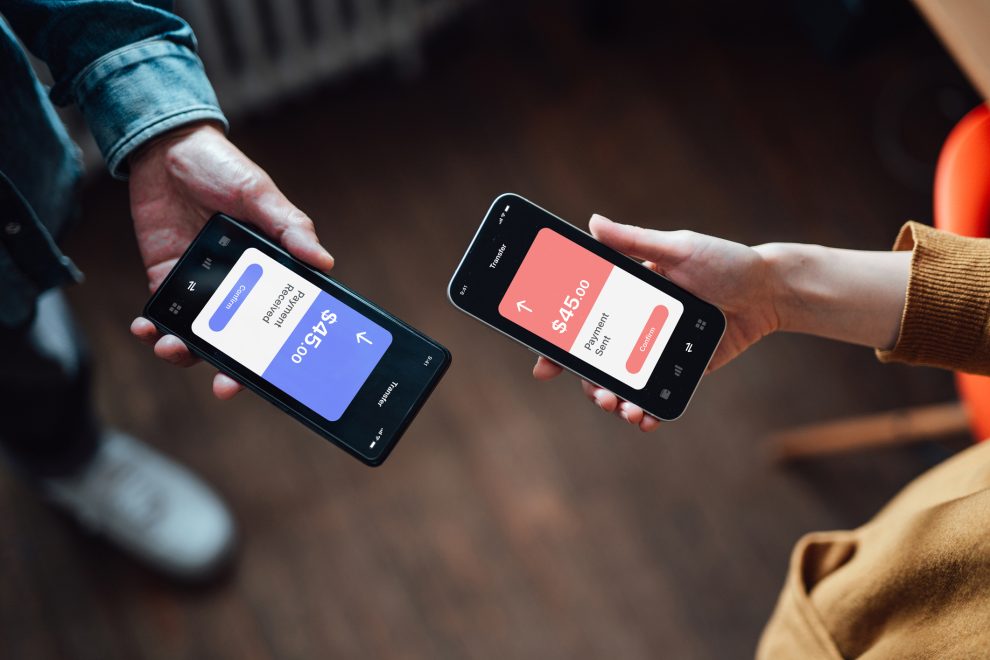The Allure of Digital Wallets
The rise of payment apps has revolutionized how we handle money in the digital age. With their sleek interfaces and promises of instant transactions, these platforms have become go-to solutions for splitting bills, paying rent, or sending cash to friends and family. Their ease of use has led many users to keep increasingly large balances in their digital accounts, treating them as makeshift savings vehicles.
Sarah Chen, a 28-year-old graphic designer from Seattle, admits, “I started using Venmo for small purchases and splitting costs with roommates. Before I knew it, I had thousands sitting in my account. It just seemed easier than transferring it to my bank.”
Sarah’s story is far from unique. A recent survey by FinTech Insights revealed that 37% of millennials and Gen Z users keep more than $1,000 in their payment app accounts at any given time. This trend, while convenient, masks a host of potential pitfalls that many users are unaware of or choose to ignore.
Lack of FDIC Insurance: A Critical Vulnerability
One of the most significant risks of storing money in payment apps is the absence of Federal Deposit Insurance Corporation (FDIC) protection. Unlike traditional bank accounts, which insure deposits up to $250,000 per account holder, most payment apps do not offer this crucial safety net.
Dr. Amanda Rodriguez, a professor of Finance at the University of Chicago, explains, “FDIC insurance is a fundamental protection for consumers. It ensures that even if a financial institution fails, your money is safe. Payment apps, operating outside this framework, expose users to the risk of losing their entire balance if the company faces financial difficulties or goes bankrupt.”
While some payment apps have begun partnering with FDIC-insured banks to offer limited protections, these safeguards often come with caveats and may not cover the full balance in a user’s account.

Security Concerns: A Hacker’s Playground
The digital nature of payment apps makes them attractive targets for cybercriminals. Despite ongoing efforts to enhance security measures, these platforms remain vulnerable to hacking, phishing scams, and unauthorized access.
John Smith, a cybersecurity expert at TechGuard Solutions, warns, “Payment apps are essentially digital vaults. The problem is, unlike physical bank vaults, these can be accessed from anywhere in the world. This global accessibility makes them prime targets for sophisticated hacking operations.
Recent data breaches and scams targeting payment app users have highlighted these vulnerabilities:
- In 2023, a major payment app suffered a data breach affecting over 5 million users, exposing personal and financial information.
- The Federal Trade Commission reported a 300% increase in payment app-related fraud cases between 2019 and 2023.
- A sophisticated phishing campaign in early 2024 resulted in thousands of users unknowingly granting access to their accounts, leading to millions in losses.
These incidents underscore the risks of keeping large sums in payment apps, where a single security lapse could result in significant financial loss.
Regulatory Gray Areas: Navigating Uncharted Waters
The rapid evolution of financial technology has outpaced regulatory frameworks, leaving payment apps in a legal gray area. This regulatory ambiguity means that users often have fewer protections compared to traditional banking products.
Lauren Thompson, a consumer rights attorney, notes, “Traditional banks operate under strict regulations that protect consumers. Payment apps, however, often fall into regulatory gaps. This can leave users vulnerable in disputes or when seeking recourse for unauthorized transactions.
The lack of clear regulations also affects how payment apps handle user funds. Unlike banks, which are required to maintain specific capital ratios and undergo regular audits, payment apps have more flexibility in how they manage and invest user balances.
Limited Interest and Growth Potential
While the convenience of payment apps is undeniable, they fall short as savings vehicles. Most payment apps offer little to no interest on balances, meaning that money stored in these platforms is effectively losing value over time due to inflation.
Financial advisor Michael Chen emphasizes, “Keeping large sums in payment apps is essentially letting your money stagnate. In today’s economic climate, it’s crucial to ensure your savings are working for you, earning interest and growing over time.”
Traditional savings accounts, high-yield accounts, and investment vehicles offer significantly better opportunities for wealth growth compared to the static balances in payment apps.
The Illusion of Liquidity: Withdrawal Woes
Many users are drawn to payment apps by the promise of instant access to their funds. However, the reality of withdrawing large sums can be far more complicated and time-consuming than expected.
Emily Watson, a 35-year-old small business owner, shares her frustrating experience: “I had been using my payment app as a sort of business account, accumulating nearly $10,000. When I needed to make a large purchase, I discovered that withdrawing the full amount would take several days and incur significant fees. It was a wake-up call about the limitations of these platforms.”
Payment apps often impose daily withdrawal limits, require additional verification for large transactions, or charge fees for instant transfers. These restrictions can be particularly problematic in emergencies or when large sums are needed quickly.
The Social Media Factor: Privacy Concerns
The integration of social features in many payment apps raises significant privacy concerns. Transactions on platforms like Venmo can be visible to friends or even publicly, potentially exposing sensitive financial information.
Dr. Lisa Park, a digital privacy researcher, cautions, “The social aspect of these apps can lead to unintended oversharing of financial habits. This not only raises privacy concerns but can also make users targets for scams or social engineering attacks.
The blending of financial transactions with social networking features creates a unique vulnerability that traditional banking channels do not pose.
Alternatives and Best Practices
Given the risks associated with storing large sums in payment apps, financial experts recommend the following best practices:
- Use payment apps for transactions, not storage: Transfer funds to your bank account regularly, keeping only small amounts for immediate use in payment apps.
- Diversify your savings: Utilize FDIC-insured savings accounts, high-yield accounts, or investment vehicles for long-term savings.
- Enable all security features: Activate two-factor authentication, biometric locks, and transaction notifications to enhance account security.
- Regular monitoring: Frequently review your transaction history and immediately report any suspicious activity.
- Educate yourself: Stay informed about the terms of service, fee structures, and privacy policies of the payment apps you use.
Balancing Convenience and Security
As payment apps continue to evolve and integrate more deeply into our financial lives, it’s crucial for users to remain vigilant and informed. Regulatory bodies are beginning to take notice, with calls for increased oversight and consumer protections gaining traction.
The Consumer Financial Protection Bureau (CFPB) has recently announced plans to scrutinize payment app practices more closely. We’re looking at ways to ensure that these innovative financial products offer the same level of protection as traditional banking services,” states CFPB spokesperson Jennifer Martinez.
A Call for Caution
While payment apps have undoubtedly revolutionized how we handle money in the digital age, they are not designed to replace traditional banking services, especially when it comes to savings. The convenience they offer comes with significant risks that users must carefully weigh.
As we navigate this evolving financial landscape, it’s imperative to approach payment apps with a critical eye, understanding their limitations and potential pitfalls. By treating these platforms as tools for transactions rather than storage, users can harness their benefits while mitigating the associated risks.
In the end, the age-old advice holds true even in our digital world: don’t put all your eggs in one basket, especially when that basket lacks the robust protections of traditional financial institutions. As we embrace the convenience of digital finance, let’s not forget the importance of security, growth, and sound financial management in safeguarding our financial futures.
















Add Comment